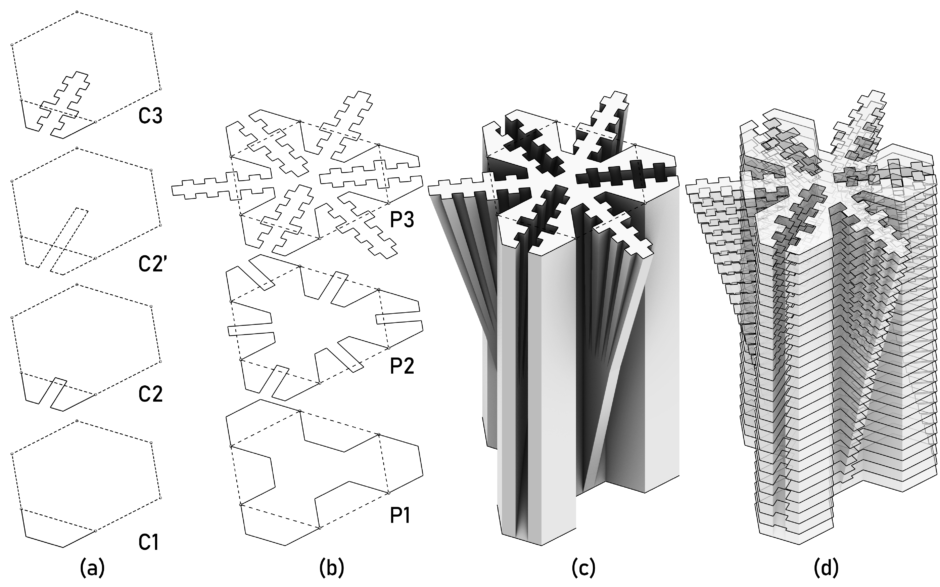Wiry Wonder
by Tuğrul Yazar | January 8, 2023 22:42
The Parquet Deformation named “Wiry Wonder” was designed by Michael Cuttita in William Huff[1]’s studio at the State University of New York in 1989. The below figure shows the original drawing made by the student. Similar to the previous one[2], this composition is based on a hexagonal lattice. In this composition there are three significant prototiles, marking the three key moments in the shape-shifting process. There is also one invisible prototile. It accommodates the transition between the last two prototiles. The first prototile is similar to the second prototile of “Strange Start, Startling Stop[3]”, composed of four small hexagons.

This prototile morphs into a shape with extensions inside and outside, creating the second prototile of Wiry Wonder. This morphing process finishes at the 8th tile from the left. The third and the last prototile make saw-like details on the newly created edges in the second prototile. Finally, this morphing process finishes on the right end. You can see these prototiles in below figure (a). It is the same symmetry operation with “Strange Start, Startling Stop”, that creates the prototiles shown in below figure (b).

The modeling approach presented above increases the speed of formal exploration. Using this method, you can design and draw a parquet deformation easily and quickly. Hopefully, I will present a Grasshopper toolset that helps in this task later. Thus, you can read the rest of the book chapter about this methodology here[4]. I hope I will study more on this topic in the future and develop the Grasshopper addon better.
- William Huff: https://archive.bridgesmathart.org/2020/bridges2020-383.pdf
- previous one: https://www.designcoding.net/strange-start-startling-stop/
- Strange Start, Startling Stop: https://www.designcoding.net/strange-start-startling-stop/
- here: https://www.degruyter.com/document/doi/10.1515/9783035625189-008/pdf
Source URL: https://www.designcoding.net/wiry-wonder/